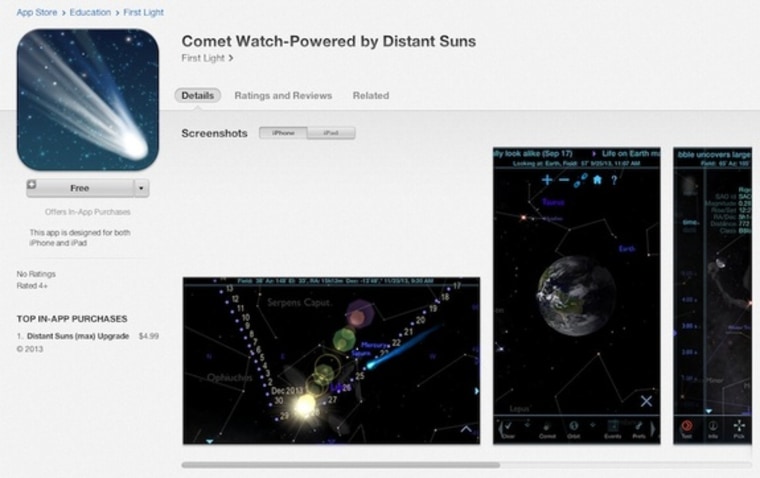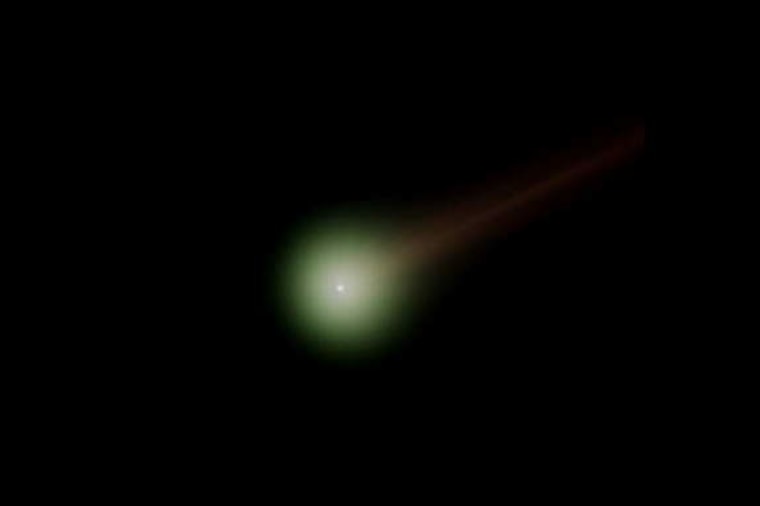The anticipation is building for Comet ISON's potentially dazzling night sky show this month and a new mobile app promises to help skywatchers spot the comet with telescopes, binoculars and their own eyes.
Called Comet Watch, the free app is available for the iPhone or iPad. Updated by the minute, the app promises to point users in the direction of Comet ISON, whose location can change quickly. The comet is already visible to the naked eye and is on track for a planned close encounter with the sun on Thanksgiving (Nov. 28).
In addition to identifying Comet ISON, Comet Watch also provides the details on how to identify the locations of constellations, individual stars, galaxies, nebulas and even SETI research targets are in relation to the comet, the app's makers say. [Amazing Photos of Comet ISON by Stargazers]
An astronomy app company called Distant Suns released the program in partnership with Astronomy magazine. You can download Comet Watch at the iTunes store.

Comet ISON was discovered by Russian amateur astronomers Vitali Nevski and Artyom Novichonok in September 2012 and now is visible to the naked eye. The comet's official designation is C/2012 S1 (ISON), with ISON standing for International Scientific Optical Network.
Comet ISON's plunge toward the sun started 10,000 years ago when it left a distant band of space rocks in the Oort cloud. After traveling millions of miles through the solar system, the comet is on track to pass within just 730,000 miles (1.2 million kilometers) of the sun during its Thanksgiving Day flyby.
If the comet survives this dangerous dive — and not all researchers are optimistic it will — it could light up the night sky in a spectacle visible to the naked eye during the next several weeks. Stargazers are already capturing stunning images of the comet through telescopes.
Editor's note: If you snap an amazing photo of Comet ISON or any other celestial sight that you'd like to share for a possible story or image gallery, please contact Managing Editor Tariq Malik at spacephotos@space.com.
You can follow the latest Comet ISON news, photos and videos on Space.com.
Follow Megan Gannon on Twitter and Google+. Follow us @SPACEdotcom, Facebook or Google+. Originally published on Space.com.
- 10 Best Space Apps in the Universe
- Best Telescopes for Beginners | Reviews and Comparisons
- Potentially Dazzling Comet ISON: 8 Essential Facts
